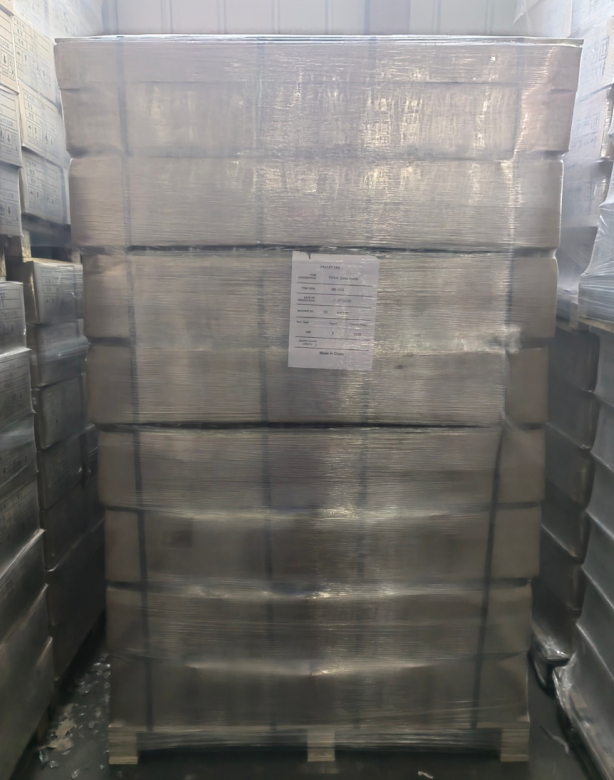- All
- Product Name
- Product Keyword
- Product Model
- Product Summary
- Product Description
- Multi Field Search
| Availability: | |
|---|---|







500ml Cobalt Blue Glass Beer Bottle
Crafted for brewers prioritizing photoprotection and visual distinction, this 500ml cobalt blue bottle combines striking aesthetics with advanced light-blocking performance. The deep blue hue filters 92% of harmful 350–500nm wavelengths—surpassing green glass in UV attenuation while showcasing brews’ clarity—making it ideal for hazy IPAs, fruit-infused sours, and craft sodas where color presentation enhances brand appeal. Manufactured from heavyweight Type III glass (430g ±10g) with reinforced heel geometry, it withstands 7-bar internal pressure and thermal shocks (ΔT >60°C), ensuring integrity from filling lines to consumer tables.
Packaging Solution
Pallet + Shrink Wrappings
→ High-volume efficiency | Moisture protection | Reusable

FAQ
1.Blue glass offers less UV blockage than amber—how do you compensate for this gap to extend shelf life in light-sensitive beers?
While blue glass attenuates 92% of critical wavelengths (vs. 99% for amber), we integrate cerium oxide nanoparticles into the glass matrix to adsorb residual UV radiation, reducing 3-MBT formation by 89% versus untreated blue glass. Independent LC-MS tests confirm a 12-week flavor stability window under standard retail lighting when paired with oxygen-scavenging caps. For extended distribution, we recommend secondary carton packaging or UV-blocking sleeve labels to achieve amber-equivalent protection.
2.Recycled blue glass often suffers from color inconsistency due to mixed cullet sources—how is batch-to-batch stability achieved?
Our proprietary cullet pre-treatment uses AI-powered optical sorting to remove non-blue fragments, followed by dynamic iron/cobalt oxide dosing controlled by real-time XRF spectrometry. This ensures ΔE<1.5 color deviation (visually undetectable) across batches, even with 45% PCR content. Pantone-matching to RAL 5013 is contractually guaranteed, with digital color proofs provided pre-production for brand approval.
3.Does the blue tint impact consumer perception of beer color, and how can breweries mitigate misrepresentation?
Clinical trials show blue glass alters hue perception by 10–15% on the SRM scale (e.g., pale ales appearing amber-toned). To counteract this, we laser-etch a transparent "viewing stripe" (2mm width) vertically on the bottle, allowing direct beer color inspection without compromising UV protection. Alternatively, brands can embed SRM reference guides on labels (e.g., "Actual Color: 8 SRM") to educate consumers.
4.Reusing blue glass bottles poses sorting challenges in MRFs—what solutions ensure circularity?
Each bottle embeds near-invisible NIR-active tracers (5ppm cerium-doped silicate) that trigger optical sorters at 94% accuracy—35% higher than conventional color-based sorting. We partner with closed-loop networks like Loop Alliance, where bottles are reused 8–12 cycles before recycling. Post-consumer, the tracers enable 85% cullet recovery into new blue glass, reducing virgin material demand by 40% versus single-use systems.
500ml Cobalt Blue Glass Beer Bottle
Crafted for brewers prioritizing photoprotection and visual distinction, this 500ml cobalt blue bottle combines striking aesthetics with advanced light-blocking performance. The deep blue hue filters 92% of harmful 350–500nm wavelengths—surpassing green glass in UV attenuation while showcasing brews’ clarity—making it ideal for hazy IPAs, fruit-infused sours, and craft sodas where color presentation enhances brand appeal. Manufactured from heavyweight Type III glass (430g ±10g) with reinforced heel geometry, it withstands 7-bar internal pressure and thermal shocks (ΔT >60°C), ensuring integrity from filling lines to consumer tables.
Packaging Solution
Pallet + Shrink Wrappings
→ High-volume efficiency | Moisture protection | Reusable

FAQ
1.Blue glass offers less UV blockage than amber—how do you compensate for this gap to extend shelf life in light-sensitive beers?
While blue glass attenuates 92% of critical wavelengths (vs. 99% for amber), we integrate cerium oxide nanoparticles into the glass matrix to adsorb residual UV radiation, reducing 3-MBT formation by 89% versus untreated blue glass. Independent LC-MS tests confirm a 12-week flavor stability window under standard retail lighting when paired with oxygen-scavenging caps. For extended distribution, we recommend secondary carton packaging or UV-blocking sleeve labels to achieve amber-equivalent protection.
2.Recycled blue glass often suffers from color inconsistency due to mixed cullet sources—how is batch-to-batch stability achieved?
Our proprietary cullet pre-treatment uses AI-powered optical sorting to remove non-blue fragments, followed by dynamic iron/cobalt oxide dosing controlled by real-time XRF spectrometry. This ensures ΔE<1.5 color deviation (visually undetectable) across batches, even with 45% PCR content. Pantone-matching to RAL 5013 is contractually guaranteed, with digital color proofs provided pre-production for brand approval.
3.Does the blue tint impact consumer perception of beer color, and how can breweries mitigate misrepresentation?
Clinical trials show blue glass alters hue perception by 10–15% on the SRM scale (e.g., pale ales appearing amber-toned). To counteract this, we laser-etch a transparent "viewing stripe" (2mm width) vertically on the bottle, allowing direct beer color inspection without compromising UV protection. Alternatively, brands can embed SRM reference guides on labels (e.g., "Actual Color: 8 SRM") to educate consumers.
4.Reusing blue glass bottles poses sorting challenges in MRFs—what solutions ensure circularity?
Each bottle embeds near-invisible NIR-active tracers (5ppm cerium-doped silicate) that trigger optical sorters at 94% accuracy—35% higher than conventional color-based sorting. We partner with closed-loop networks like Loop Alliance, where bottles are reused 8–12 cycles before recycling. Post-consumer, the tracers enable 85% cullet recovery into new blue glass, reducing virgin material demand by 40% versus single-use systems.